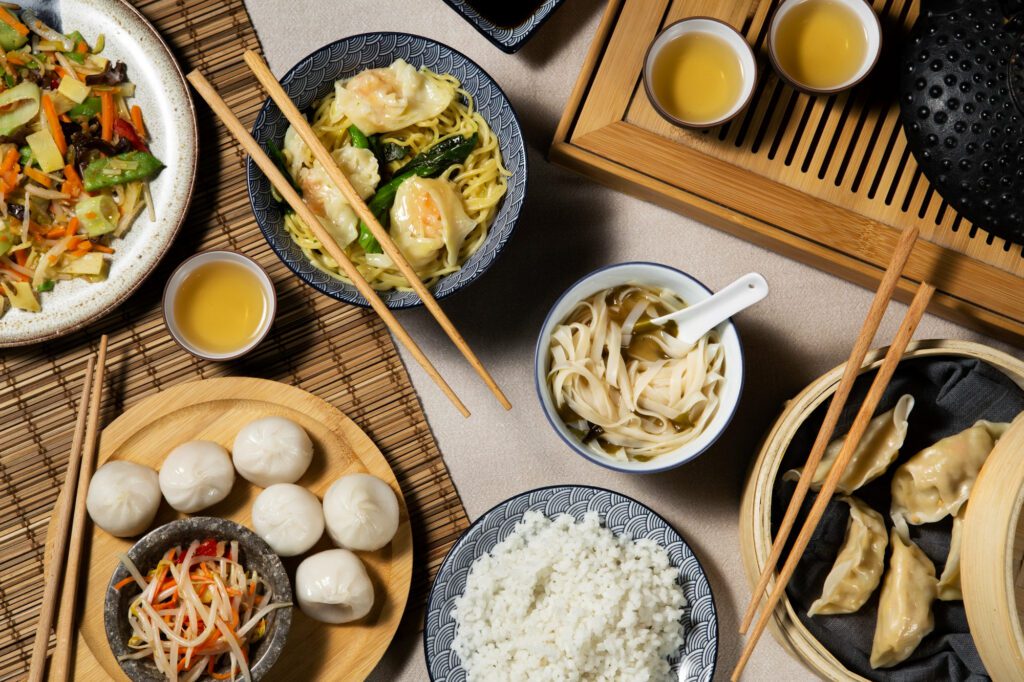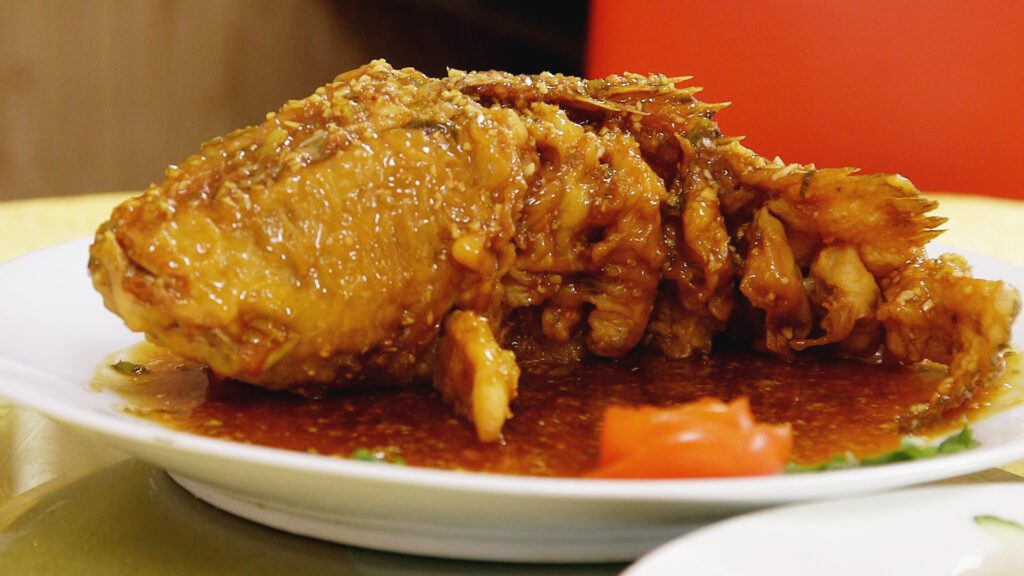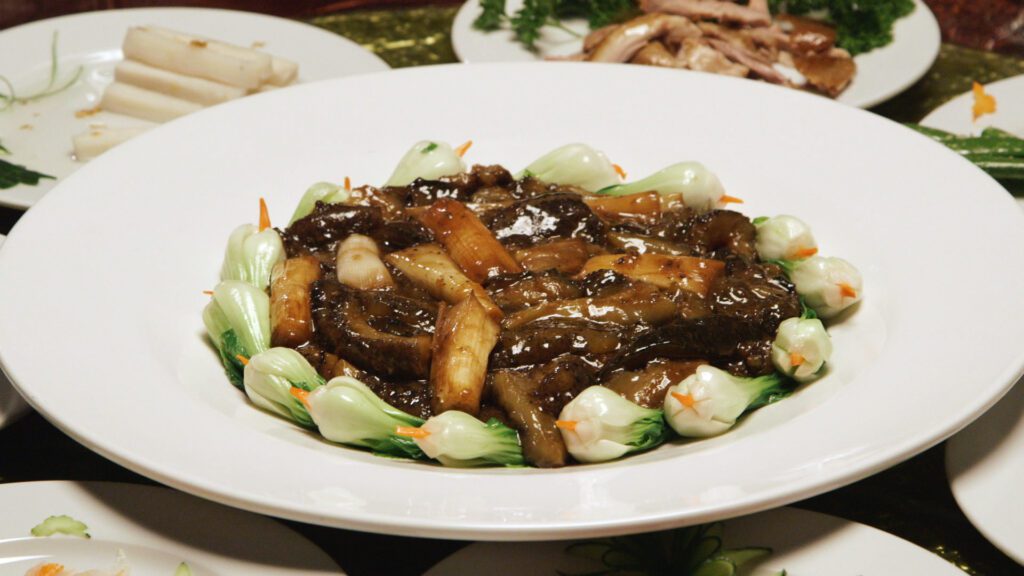The Chinese Cuisine - A Beginner's Guide

Chinese cuisine is one of the oldest and most diverse in the world, offering a rich culinary tradition that spans over 2,500 years. It is not just about nourishment but about bringing people together, promoting harmony, and reflecting the culture’s respect for balance in both food and life. The Chinese believe that good food can strengthen relationships and foster unity. With an emphasis on freshness and variety, Chinese cooking combines texture, flavor, color, and aroma to create meals that are both satisfying and nourishing.
Chinese Food Culture
In Chinese culture, food is not merely something to eat—it’s an essential part of life that influences social dynamics and family connections. The focus in Chinese cooking is not just on taste, but on balance and the harmony of ingredients. Meals are carefully crafted to reflect the seasons. And with fresh, local produce being a key component. Unlike in fast-paced societies like the U.S., where convenience often dictates food choices, Chinese people visit local markets daily to pick the freshest vegetables, meats, and seafood.
Dairy consumption is low in traditional Chinese diets due to widespread lactose intolerance. Instead of milk and cheese, tofu and soymilk are commonly used as protein and calcium-rich alternatives. Meals consist of four main food groups: grains, vegetables, fruits, and meats. Preserved foods like salted fish, pickled vegetables, or dried fruit are used occasionally. But, fresh ingredients are always preferred. For dessert, Chinese cuisine offers treats like seasonal fruit or traditional sweets like red bean soup or lotus seed soup, often served after dinner as a light, refreshing conclusion to a meal.
The Role of Freshness and Texture
Chinese cooking places a high value on freshness and texture. Dishes are carefully prepared to ensure that the ingredients retain their natural taste and quality. This approach extends to the way food is prepared and served: many dishes are steamed, stir-fried, or braised to preserve the original texture of vegetables and meats. Even though Western influences have led to the creation of deep-fried dishes in Chinese-American restaurants, such as sweet and sour pork or fried chicken, traditional Chinese cuisine avoids heavy frying in favor of lighter, healthier cooking methods.
The texture of food plays a significant role in Chinese cuisine. Whether it’s the tenderness of a perfectly braised piece of meat, the crispness of stir-fried vegetables, or the chewiness of noodles, the way food feels in the mouth is just as important as how it tastes. This is reflected in the wide variety of textures used in different dishes, from the smoothness of tofu to the crunchy bite of fresh vegetables.
The Chinese Banquet
A central part of Chinese food culture is the concept of the banquet. It is an elaborate, multi-course meal often served during special occasions like weddings, holidays, or family gatherings. These banquets usually consist of 10-12 dishes, with an emphasis on abundance and variety. Each dish is carefully chosen to symbolize good fortune, health, and prosperity. Common dishes include roasted duck, abalone, sea cucumbers, lobster, quail, and various seafood, along with rich soups like shark fin soup or bird’s nest soup. These meals are meant to showcase the skill of the chef, the quality of the ingredients, and the importance of family and community.
The dishes served at a Chinese banquet are designed to please the palate and nourish the body in different ways. Many dishes are believed to have health benefits. The combination of ingredients is thought to create a balance that promotes well-being. For example, shark fin soup and bird’s nest soup are considered delicacies that replenish energy and increase appetite. Other more unusual ingredients, such as crocodile meat or monkey brains, are believed to provide strength or wisdom.
The 8 Major Chinese Cuisines
Chinese cuisine is incredibly diverse, with each region offering its own distinct flavors and cooking methods. They are shaped by geography, climate, and local ingredients. These regional differences have led to the development of eight major culinary traditions, each with its own unique techniques and flavors. These eight cuisines, known as Lu Cai, Chuan Cai, Yue Cai, Su Cai, Min Cai, Zhe Cai, Xiang Cai, and Hui Cai, represent the rich cultural diversity of Chinese food. Let’s explore these eight distinctive cuisines that have shaped China’s food culture.
1. Lu Cai (鲁菜) - Shandong Cuisine
Lu Cai, or Shandong cuisine, is one of the oldest and most influential culinary styles in China. It is particularly famous for its use of fresh seafood, savory flavors, and crispy textures. The region is known for its emphasis on clear, light broths, often enhanced by seafood and delicate seasonings. Dishes like braised sea cucumber, spicy stir-fried clams, and sweet and sour carp highlight the freshness of ingredients. The cuisine also focuses on techniques like deep-frying and stir-frying, giving a crispy texture to dishes that contrasts with the tender meats and vegetables


2. Chuan Cai (川菜) - Sichuan Cuisine
Chuan Cai, or Sichuan cuisine, is known for its bold, spicy flavors. It is known for it’s distinctive use of Sichuan peppercorns, which give dishes a numbing, tingling sensation. This cuisine features hearty, flavorful dishes that balance heat with complex seasoning. Classic dishes from Sichuan include Kung Pao Chicken, Mapo Tofu, and Sichuan Hot Pot. They all incorporate liberal amounts of chili peppers, garlic, and a variety of spices. Sichuan cuisine is perfect for those who enjoy intense flavors and love a bit of spice in their food.

3. Yue Cai (粤菜) - Cantonese Cuisine
Yue Cai, or Cantonese cuisine, is perhaps the most famous Chinese culinary style worldwide. This cuisine is characterized by its emphasis on freshness, lightness, and subtle flavors. Cantonese chefs are skilled at preserving the natural taste of ingredients, with seafood and poultry playing a central role. Cantonese cuisine is known for its delicate, tender textures, showcased in dishes like roast duck, sweet and sour pork, and dim sum. Cantonese food is often less spicy than other regional cuisines, making it a favorite among those who appreciate more refined, natural flavors.

4. Su Cai (苏菜) - Jiangsu Cuisine
Su Cai, or Jiangsu cuisine, is renowned for its delicate and slightly sweet flavors. Known for its fine textures and elegant presentation, Jiangsu cuisine incorporates ingredients like freshwater fish, pork, and seasonal vegetables. Famous dishes include Yangzhou Fried Rice and Nanjing Salted Duck, which highlight the region’s mastery of braising and steaming techniques. The cuisine often features long cooking times to achieve tender, flavorful results. Jiangsu food is perfect for those who enjoy refined, slightly sweet, and savory flavors.
5. Min Cai (闽菜) - Fujian Cuisine
Min Cai, or Fujian cuisine, is distinct for its emphasis on soups, broths, and stews. This style of cooking often includes a variety of herbs, spices, and seafood, with a focus on balancing the umami flavors. Fujian cuisine uses a unique technique called red fermentation, which imparts a rich, savory flavor to many dishes. Popular dishes include Buddha Jumps Over the Wall (a complex soup made with rare ingredients) and Fujian Fried Rice. The cuisine is known for its delicate balance of sweet, sour, and salty flavors, offering a refreshing contrast to the heavier, spicier styles of other regions.
6. Zhe Cai (浙菜) - Zhejiang Cuisine
Zhe Cai, or Zhejiang cuisine, is known for its emphasis on freshness and simplicity. The region is famous for its use of seafood, freshwater fish, and seasonal vegetables. Dishes are typically light, yet flavorful, with a focus on maintaining the natural taste of the ingredients. West Lake Fish in Vinegar Sauce and Dongpo Pork are two signature dishes from this region. Zhejiang cuisine also features unique techniques like steaming and braising, resulting in tender, melt-in-your-mouth textures. Zhe Cai is perfect for those who appreciate light yet savory flavors with a focus on freshness.
7. Xiang Cai (湘菜) - Hunan Cuisine
Xiang Cai, or Hunan cuisine, is similar to Sichuan cuisine in its bold use of chili peppers but is known for being even spicier. The cuisine is characterized by its bold and robust flavors, often incorporating sour and savory elements. Dishes like steamed fish head with chopped chili and stinky tofu are popular in Hunan cuisine, offering intense heat and tangy flavors. Hunan food also includes a variety of pickled vegetables, which contribute to its unique sour-spicy profile. For those who enjoy fiery flavors and strong spices, Xiang Cai is an ideal choice.
8. Hui Cai (徽菜) - Anhui Cuisine
8. Hui Cai (徽菜) - Anhui Cuisine
Hui Cai, or Anhui cuisine, is known for its use of wild game, herbs, and slow-cooking techniques. The cuisine often focuses on braised and stewed dishes, which bring out the natural flavors of ingredients over a long cooking process. Stewed soft-shell turtle and braised pigeon are examples of classic dishes from Anhui cuisine. It is also recognized for using a wide range of locally sourced herbs and wild plants, which are thought to have medicinal properties. The flavors are typically rich and earthy, appealing to those who enjoy deep, hearty dishes.
Yin and Yang: The Balance of Food
A key concept in Chinese cuisine is the idea of balancing “yin” and “yang,” the two opposing forces that are believed to govern the universe. This philosophy extends to food, with different ingredients classified as either “yin” (cooling) or “yang” (heating). The goal is to maintain balance in the body, especially in relation to the climate and personal health.
For example, people in Southern China, where the climate is warmer, prefer cooler foods like fruits and vegetables to help counteract the heat. In contrast, those in Northern China, with its colder climate, gravitate toward spicier, warmer foods like chili peppers and garlic. This balance of yin and yang is thought to help promote harmony and good health.
Certain foods are believed to replenish specific parts of the body. For example, shark fin soup is thought to strengthen the lungs, while bird’s nest soup is believed to enhance beauty and health. Similarly, meats like beef and lamb are thought to be beneficial for those needing extra warmth or strength, while more cooling foods like watermelon and cucumber are used to reduce heat in the body.
Conclusion
Chinese cuisine is far more than just a way to satisfy hunger. It is a celebration of freshness, balance, and tradition, deeply intertwined with the culture’s values of family, health, and harmony. From the aromatic spices of Sichuan to the delicate, fresh flavors of Cantonese food, Chinese cooking offers a vast array of flavors and experiences. Whether at a family dinner or a grand banquet, Chinese food brings people together, nourishes the body, and fosters connections that go far beyond the dinner table.






